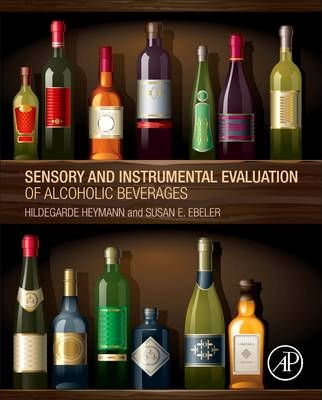
Sensory and Instrumental Evaluation of Alcoholic Beverages
Academic Press Inc (Verlag)
978-0-12-802727-1 (ISBN)
Analytical methods for identifying and assessing the flavor compounds present in the beverages are included that address both volatile and non-volatile techniques, along with rapid methods of assessment. Case studies highlight the testing of different types of alcoholic beverages running the entire gamut of methods and the appropriate subset of methods. Also included is information of data analyses with the appropriate R-codes to allow practitioners to use the book as a handbook to analyze their own data.
Sensory scientist Dr. Hildegarde Heymann joined the Department of Viticulture and Enology in January 2003. Formerly a Professor at the University of Missouri, Dr. Heymann has worked in all areas of sensory science and has evaluated numerous food and non-food products including wine, meat, ice cream, cereals, juices, cat litter, soap, and toothpaste. At UC Davis Dr. Heymann has continued her work with descriptive analysis methodology and multivariate data analyses. She has also worked on spirits such as gin, mescal and tequila, food-wine interactions, wine color perception, fruit such as raisins, tomatoes and figs. She is the co-author (with Harry T. Lawless from Cornell University) of the sensory textbook Sensory Evaluation of Foods: Principles and Practices, currently the most prescribed sensory textbook worldwide. Additionally, she has presented workshops and short courses on sensory science in South Africa, Finland, New Zealand and the USA. Heymann was named Honorary Researcher Lecturer by the American Society for Enology and Viticulture in 2004. In 2000, Dr. Heymann received the Faculty Alumni Award from the University of Missouri Alumni Association; in 1993 she received the Gold Chalk Award for Excellence in Graduate Teaching from the Graduate Professional Council; and in 1991 and 1993 she was awarded "Professor of the Year" from the Food Science Association. Dr. Ebeler's research is focused in two major areas: The development and application of analytical chemistry techniques to study wine flavor chemistry and the physico-chemical interactions of flavors with nonvolatile wine components; and the elucidation of the chemical mechanisms for observed health effects of wine and wine components. She has been invited to speak about wine flavor chemistry and health effects at a number of national and international meetings, and has organized and served as co-chair for special symposia on wine flavor chemistry at the national meetings of the American Chemical Society and the American Society of Enology and Viticulture.
Part I: Sensory evaluation: principles and application to wines1. Sensory perception2. Purposes of sensory and analytical testing in the alcoholic beverage industry3. Overview of applicable sensory evaluation techniques
Part II: Analytical techniques used to analyse flavour compounds associated with alcoholic beverages4. Rapid methods to analyse alcoholic beverages5. Volatile analyses of alcoholic beverages6. Non-volatile analyses of alcoholic beverages
Part III: Case studies in the sensory testing of wines and alcoholic beverages including data analyses and R-codesThese would be picked to cover the entire gamut of methods mentioned in part I and the appropriate subset of methods discussed in Part II.7. White wine8. Red wine9. Sparkling wine10. Beer11. Spirits
| Erscheinungsdatum | 18.11.2016 |
|---|---|
| Verlagsort | San Diego |
| Sprache | englisch |
| Maße | 191 x 235 mm |
| Gewicht | 770 g |
| Themenwelt | Technik ► Lebensmitteltechnologie |
| ISBN-10 | 0-12-802727-4 / 0128027274 |
| ISBN-13 | 978-0-12-802727-1 / 9780128027271 |
| Zustand | Neuware |
| Haben Sie eine Frage zum Produkt? |
aus dem Bereich


